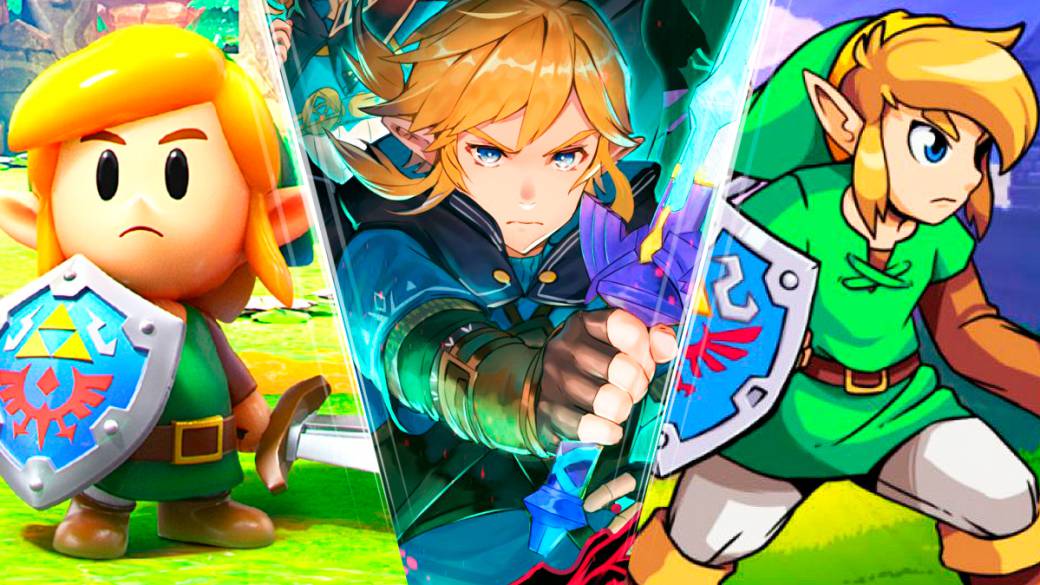
The artistic direction in the saga The Legend of Zelda has been characterized by its premeditated mutability. Today, and in view of a near horizon, the series faces new challenges from different aesthetic prisms.
A violent storm triggers nervousness among the spectators. The sea raging by divine punishment has taken it with a small ship. Hardly, its only crewman manages to keep it on the path before the scourge of the waves, while the sea foam makes its way between the unstable wooden slats that make up its deck.
The fabrics that make up the candle; cracked The black clouds that prevent the passage of even a faint ray of light; unloading millions of knives formed by the liquid element without contemplation.
And among such a tidal wave of chaotic origin, the hero's gaze reveals a familiar face: – It's Link! – we shouted in unison many of those who were enjoying the last surprise that the Nintendo Direct held in February of this same 2019.
We have related, not without some dramatic emphasis, the moment in which the Japanese company announced the development of The Legend of Zelda: Link's Awakening Remake for Nintendo Switch. With a cartoon face, striking — and colorful — three-dimensional graphics, and a zenith view inheriting the titles for Nintendo Entertainment System and Game Boy, the graphic section wasted love for each of its virtual pores.
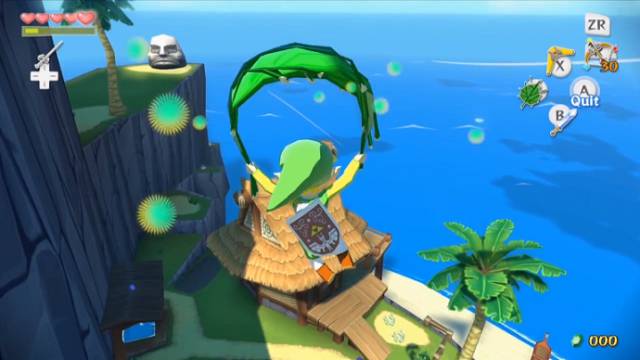
More opinions against the aesthetics chosen by Nintendo to breathe new life into this little masterpiece soon surfaced. And also a certain air of Déjà vu: almost twenty years ago something similar happened – even more loud and unidirectional it seemed the complaint – with another video game of the franchise that decided to break with the established visual canons. Indeed, we are talking about The Legend of Zelda: The Wind Waker.
“The original version of The Legend of Zelda: The Wind Waker was launched in 2002, but in the Space World of the previous year, in 2001, we had revealed how Zelda's next game could be (…) With the announcement of Wind Waker, people were surprised and bewildered, because they expected something in another line ”Satoru Iwata
If there is something that has characterized this saga, beyond its playable proposals (conservative in certain planes, revolutionary in others), it is its active intention to surprise through risky – and quite differentiated – artistic approaches. As Satoru Takizawa (Twilight Princess and Breath of the Wild Art Director) has repeatedly stated, “We look for the best way to express the unique spirit of each particular game, to create a world that is exciting for players and give them wings to explore. ”
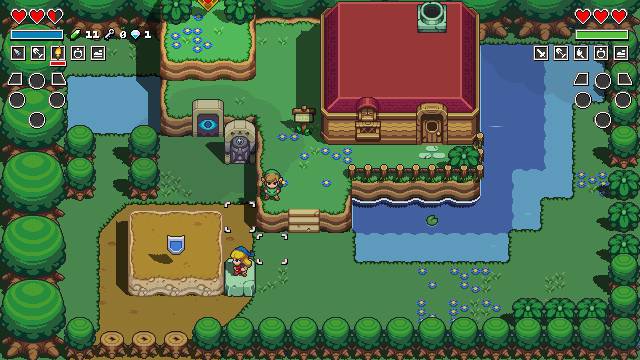
Unlike the Mario saga, which has maintained a fairly stable line of sight in its platform titles, the adventurous saga par excellence has fiddled with two-dimensional graphics from various perspectives, has dared to flirt with cel shading from very imaginative prisms – for unexpected moments – and has achieved, with high success rates, serve as a reference of excellence for hundreds of developers, both in large companies and from the indie scene.
And, today, the series is richer than ever in this regard, thanks to the production of three video games as different as exquisite aesthetically. We are talking about the recently launched Cadence of Hyrule (from Brace Yourself), the increasingly close The Legend of Zelda: Link's Awakening Remake (programmed by Grezzo), and the future sequel to The Legend of Zelda: Breath of The Wild ( from Nintendo itself). This trio of aces demonstrates, on the one hand, the good health of one of the most prolific video game series in history and, on the other, it claims the importance of visual expression based on the interactive sensations that one wants to represent.

With the illusion of a child
The independent video game Crypt of the Necrodancer was, without any doubt, a resounding success from the independent scene. With his proposal Roguelike fell in love with his own and strangers, so the popularity of the videogame made it rise with a multitude of awards.
No one would have imagined that The Legend of Zelda franchise, little given to Spin-offs beyond the Hyrule Warriors subsaga, would fall into the —promteting— hands of Oliver Trujillo in order to offer a new air to the franchise. The announcement moved the followers of Crypt, while its attractive graphic section soon fell in love, more generally, enthusiasts of the franchise The Legend of Zelda.
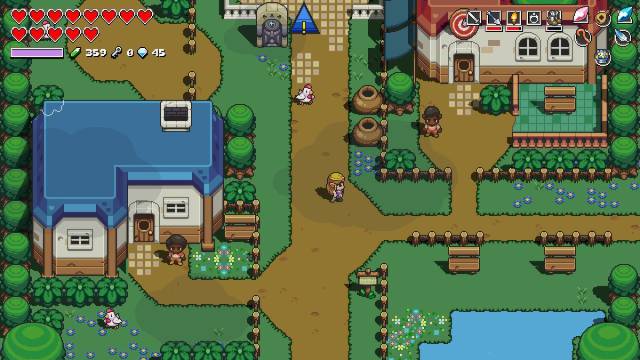
The case we are talking about is also unexpected: Nintendo did not go directly to Brace Yourself to propose to work together but vice versa. Something that has also surprised media legends like Yuhi Naka (Sonic's father), who claims to have tried on more than one occasion to work with Mario as a character in one of his video games, admitting “always return empty-handed” after meeting with Nintendo managers.
On the other hand, Miyamoto declined the possibility of “lending” the Zelda franchise to Retro Studios to be in charge of a specific chapter of the saga, when asked during their stay in Spain following the Prince of Asturias Award he received in 2012. A server commented on the possibility of a Retro Studios directive going to Nintendo – with the illusion of a child – with the intention of addressing such a responsibility.
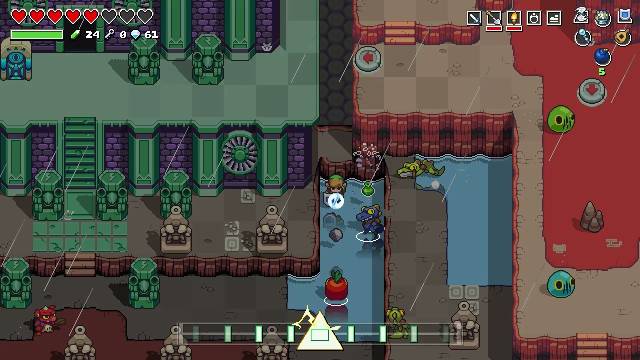
Although at first Shigeru said he would consider the proposal, he finally stated that "the script of The Legend of Zelda has always been and should be on Nintendo, so the difficulty of communication would be one of the main impediments." No wonder that even Ryan Clark – Founder of Brace Yourself – is totally surprised – and really motivated – by Nintendo's response to an idea that, at first, was only going to be a Crypt of the Necrodancer DLC.
“To our surprise, Nintendo was extremely interested in the perspective, and before we knew it, we were working on a completely new title, combining NecroDancer with The Legend of Zelda!” Ryan Clark
Beyond its obvious general quality and superb soundtrack, the most remarkable aspect of the project at hand is its phenomenal aesthetic concept: a graceful mix of the visual charisma of some top-down videogames of the franchise (such as A Link to the Past or The Minish Cap) and the unique character design of Paul Veer – who demonstrated his incredible talent in Sonic Mania – result in one of the strongest pixel art video games on the market.
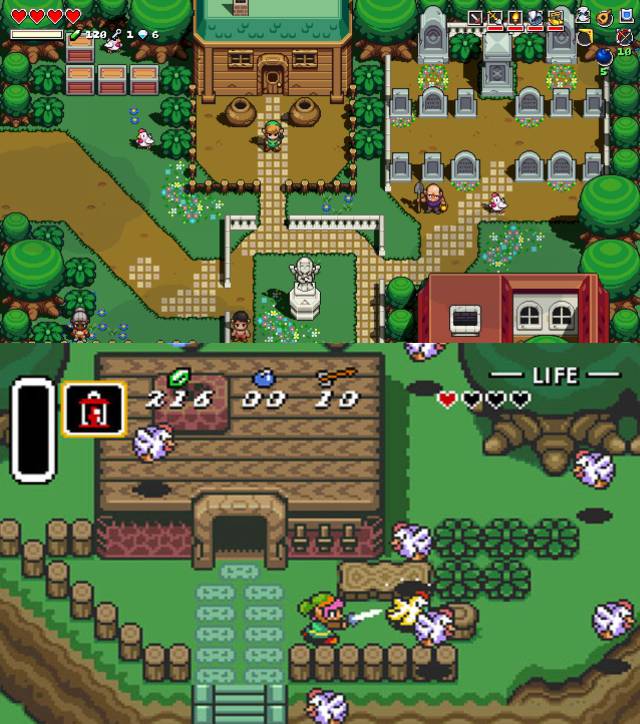 Above, a capture of Cadence of Hyrule. Below, The Legend Of Zelda: A Link to the Past.
Above, a capture of Cadence of Hyrule. Below, The Legend Of Zelda: A Link to the Past.
The classic trees, buildings, rock formations or interior complements that we have been able to enjoy in the aforementioned titles, are represented with a cleanliness and warmth like no other in Cadence of Hyrule. Through an aesthetic style that denotes an anime inheritance typical of some chapters of the Zelda saga, together with a minimalist finish in the use of colors and highlighting lines typical of a Cartoon Network series such as Adventure Time, Cadence of Hyrule also It transports us to the good work of David Hankin with Swords of Ditto.
There is excellence in this pixel art: the diagonals are perfectly represented, there is no indication of wanting to simulate a forced oversampling, and the same diagram and relation of aspect and size of the pixels for all objects, characters, elements is respected of interface and even overprinted texts on the screen. All rules well applied to achieve a finish above titles such as Crossing Souls or Count Lucanor.
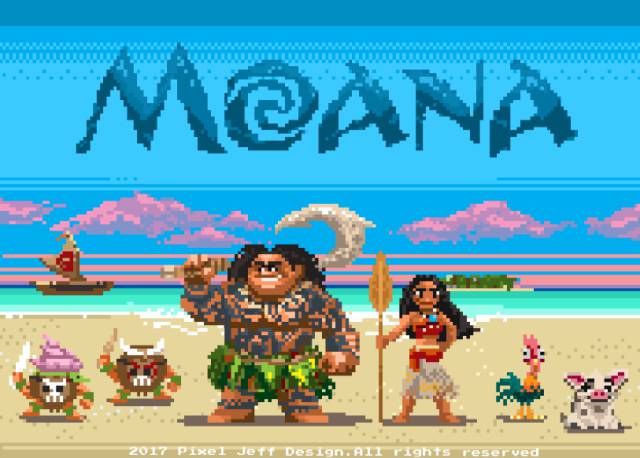 Pixel Art image made by Pixel Jeff.
Pixel Art image made by Pixel Jeff.
In an artistic environment where the retro aesthetics of the 90s serves as a source of inspiration for artists such as “Pixel” Jeff or Ivan Dixon, the work at hand is a great example of the technique – often undervalued for having put fashion within the landscape of independent development – carried out with expertise and good work in the interactive field. And being The Legend of Zelda the subject to be discussed, Cadence of Hyrule overflows good taste on all four sides.
The dream turned into an interactive toy
On the other hand, Switch will shortly receive one of the most anticipated remakes of the moment. Taking as a main reference Link's Awakening of our beloved Game Boy, Nintendo had it clear: the objective was to transfer the experience of being before a great world to explore in miniature, to get to transmit to the player what many of us feel when we put ourselves in command Link on your particular trip inside Koholint Island.
Hardly explainable with words is the fact of having condensed on the monochrome screen of the first portable console in history, an adventure with many of the ingredients that The Legend of Zelda had given us on desktop.
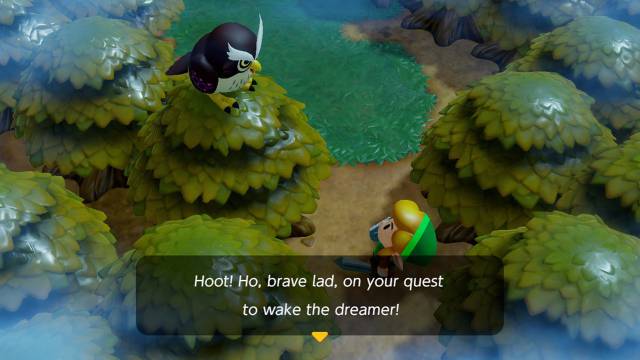
It is in the visual plane where part of the responsibility of this sensation falls. You could have chosen a cartoon style closer to The Legend of Zelda: Wind Waker (already used for zenith titles such as Phantom Ourglass or Spirit Tracks), although also having opted for more graphics in tune with titles at the height of Four Swords Adventures But Nintendo knew that the moment of experiment was coming before his eyes.
"When I played the original version of Game Boy, it was a small screen, and you felt you were facing a small world, but very vast. The Tilt Shift perspective effect was ideal; that's why I thought this diorama-like art would be perfect for our case ". Eiji Aonuma
The style of this Link’s Awakening remake sits on several pillars. The design of characters, enemies and objects of the game responds to a Chibi style Anime finish: it is more extreme than in other chapters of the Zelda saga. We can see a Link more adorable than ever, whose eyes are summed up in two black oval spheres, and where facial expressions are minimized.
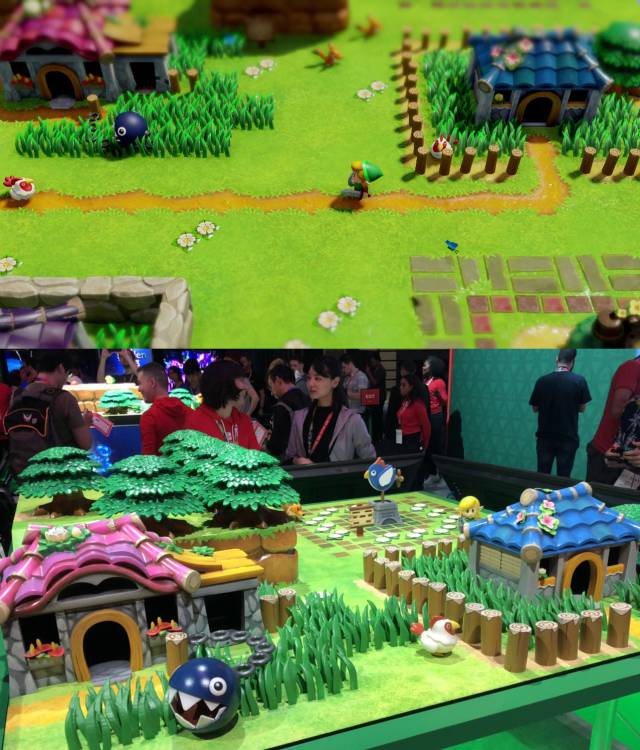 Above, a capture of the game for Switch. Below, its equivalent in real diorama format.
Above, a capture of the game for Switch. Below, its equivalent in real diorama format.
In the animation plane, the stretch & squash effect is widely used, whereby the movements acquire a “soft” appearance thanks to an exaggerated anticipation and deformations in the elements of the character very noticeable. The "bounce" effect on these animations goes beyond what was done in The Legend of Zelda: A Link Between Worlds, resulting in a much more dynamic aspect.
On the other hand, the scenarios are configured in the same way. Reliably respecting the sizes and organization of elements that made the original triumph, several key factors are added: attention for the texturing of surfaces and elements, addition of a tilt shift effect and configuration of a scroll system in certain locations.
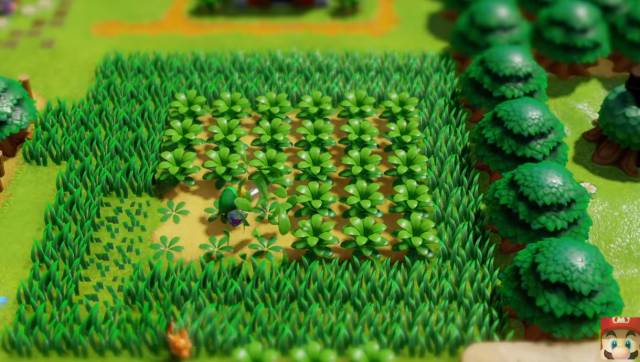
This effect, for those who don't like the term, became popular in photography when the urban landscape artist wanted to give the viewer a feeling that he was watching toy models. To do this, he limited the depth of field of his aerial photographs (the foreground and background being very out of focus), added saturation to the scene and chose high places for the shots. It is an effect also used in video production and video games such as Wonderful 101.
A world with the appearance of a diorama in motion
In a first aesthetic Reviews of The Legend of Zelda: Link’s Awakening Remake, it would be difficult for us to place a realistic textured text within a proposal by cariz cartoon. However, that is precisely what is intended with this production: to give the feeling that we are facing an interactive model, where the elements interact with each other as if they were small toys.
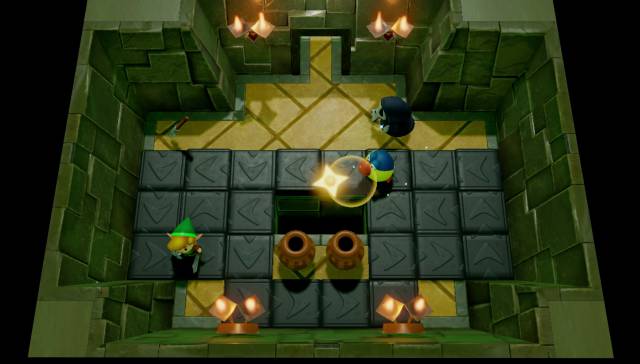
Within the world of design, there is a really exciting aspect that is based on the production of images with a really charming diorama look. Through 3D techniques and a lighting system based on Radiosity, objects and characters that appear physically real (give the feeling of being resin miniatures) are recreated despite their stylized design. Artists such as Roman Klčo or Mohamed Chahin are two of the masters of this type of techniques, where the shallow depth of field blur enhances the tilt shift effect, giving the virtual creations a toy aspect.
In the field of animation, with studies at the height of Pixar increasingly leading his direction of photography towards extreme realism – reaching unsuspected limits in films like Toy Story 4 or the short film Piper – and design artists such as Guillaume Kurkdjian creating trend Dribbble, it is not surprising Nintendo's decision to opt for a finish that, saving the distances, they have also experienced in Yoshi's Crafted World.

Within Link’s Awakening we see how the props, as well as the vegetation, the houses or the special items, are endowed with a layer of specularity quite noticeable, making them look like plastic. For surfaces such as rock, sand, stone or metal, advanced techniques have been used in normal mapping in order to achieve a natural and credible appearance.
In the lighting plane, a combination of real time, lightmaps and SSAO (Screen Space Ambient Occlusion) techniques give the game this very charming and natural finish, halfway between a fairy tale and a model made with Lego toys. The achieved atmosphere allows us to switch between inhospitable caves, sunny beaches, mysterious forests and dark dungeons without losing the feeling of being before an extensive diorama in motion.
 Some samples of 3D works with miniature appearance.
Some samples of 3D works with miniature appearance.
It is therefore understandable that, during E3 2019, Nintendo commissioned its artist Max Hancock to make large-scale scenarios based on the game, where attendees had the pleasure of testing the Nintendo title while enjoying their recreated physical version With every little detail.
As we have commented in the introduction of this same article, the style chosen for this new version of the Game Boy classic was not to everyone's liking (it also happened, although on a smaller scale, with the launch of A Link Between Worlds) despite the fact that Everything seems to indicate that time will give value to the aesthetic decision made by the Kyoto company, as has happened on other occasions.
The dark beauty of the wild
And, as if it were the last fragment of the triforce, the next title of the acclaimed franchise The Legend of Zelda has shown its strength during E3 2019. Few were expected to announce a direct sequel to Breath of the Wild, but so has happened. Through a palette of darker and more desaturated color, a dark aesthetic and musical setting, and the greater prominence given to Princess Zelda during her teaser, the next title of the series has seduced critics and audiences alike.
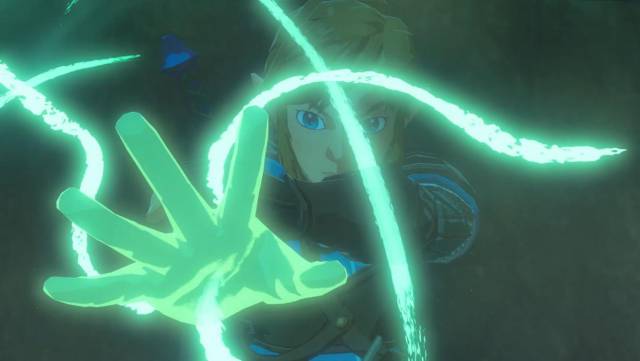
As we indicated in detail in the article Art and Animation in Breath of the Wild, the cel shading used to give life to this particular Open World universe once again redefined the aesthetic canons of the technique. Continuously, although giving new pieces in terms of interior lighting and architectural recreation, the graphic section of the next videogame commanded by Hidemaro Fujibayashi seems to again opt for visual excellence.
The polygonal load of the characters allows the recreation of faces, clothes and complementary elements in great detail, although we are facing a texturized practically summarized in flat inks. The torchlight is responsible for defining the shapes, giving them depth, and separating the light and dark ones by means of multiple tonal assessments (remember that in Wind Waker there were only two, one for the light, the second for the shadow).

Something that caught the attention of the attendees, the new haircut for Princess Zelda, raises suspicions that she presents herself as a playable character. In any case, the slight change suits you wonderfully, the idea of having the possibility of a cooperative way thrills thousands of people, while the recreation of an evil Ganon that seems to once again harbor a glimpse of life inside, It transports us directly to the darkest fragments of Hayao Miyazaki's filmography.
We are talking about these dark elements of disturbing representation, as happens in films at the height of Princess Mononoke or The Walking Castle, where evil is presented as a viscous, changing and uncontrollable darkness, ready to spread its grief wherever it progresses.
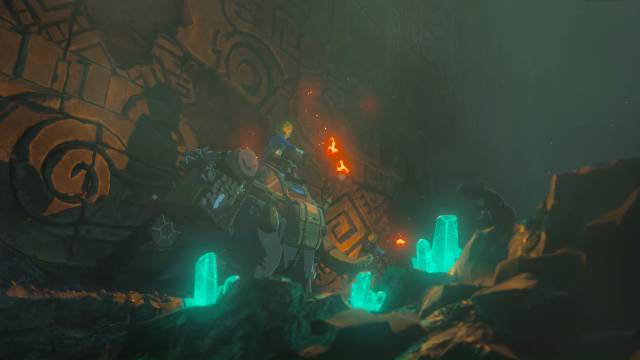
We continue to see pieces of Makoto Shinkai and his Journey to Agartha in some designs, and a color palette that reminds us of certain fragments of The Castle in the Sky. Although it is still premature to analyze the artistic direction of this project, everything seems to indicate that Satoru Takizawa is putting all his efforts to surprise the respectable.
A promising future
With Cadence of Hyrule already launched (and reaping unbeatable criticism internationally) and two projects across the horizon, fans of The Legend of Zelda franchise are in luck. We have been able to enjoy the epic The Ocarina of Time taken to a new level with Twilight Princess, the visual fable condensed in the beloved Minish Cap or the wonderful staging of Wind Waker.
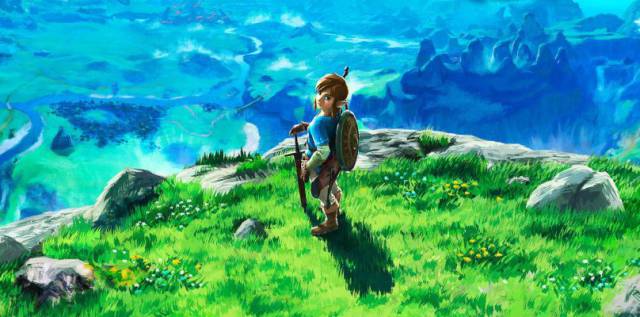
After the huge surprise – due to the ambitious of the project in every way – that was Breath of The Wild, the breath of fresh air that Cadence of Hyrule has brought with it and the nostalgia condensed in the Nintendo Switch version of Link's Awakening, so We can only dream that the release of the sequel to Fujibayashi's latest title is up to the occasion.
No hurry; We know that masterpieces are forged from the heart, so we only want the adventure to manifest itself again from its purest essence, and if it is waking us up under the skin of Princess Zelda, better than better.
REFERENCES
BENJAMINSSON, Klas (2016) The Masters of Pixel Art. Sweden: Nice Pixel Publishing. 216 pages
BUCHAN, Suzanne (2016): Animated ‘Worlds’, London: John Libbey Publishing, 207 pp.
NINTENDO. (2018). The Legend of Zelda: Breath of the Wild – Creating a Champion. US: Dark Horse Comics. 355 pages
IGN Entertainment (2007). Ign.com (online) Available at: http://ign.com (accessed July 10, 2019)
NINTENDO (2013). Iwataasks.com (online) Available at: http://iwataasks.nintendo.com/interviews/#/wiiu/wind-waker/0/0 (accessed Jul 10, 2019)
ONTECNIA (2012). juegosdb.com (online) Available at http://www.juegosdb.com/mesa-redonda-con-shigueru-miyamoto-wii-wii-u-nintendo-ds-nintendo-3ds/ (Accessed July 10, 2019)
Wikipedia (2017). Wikipedia.org – the free encyclopedia. (online) Available at: http: //wikipedia.org (Accessed July 10, 2019).

